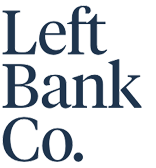Heritage assets as creative assets
Rone at Flinders Street Station
Investigating adaptive reuse for creativity
Oftentimes we see recurring themes appear across multiple projects and cities. Lately we’ve spent a lot of time thinking about and working on light-touch reuse of significant heritage assets. We’re excited to see future-facing land owners and precincts thinking about creativity and culture for these assets, and we've been bringing together experts and industry to gauge the appetite, viability and feasibility of transforming these buildings into spaces for making and presenting culture.
When delivering new cultural space, operational models always come first. But with an existing building – particularly one with heritage constraints – operations have to fit within the realm of what is physically feasible to do with the space. Three key questions are guiding our work where we’ve been exploring these constraints.
Is there appetite?
Can we realistically create an ongoing program of activations in this location?
The only way to gauge this appetite is through engagement with direct stakeholders and existing operators to understand desirability for a new space of this kind. We need to understand whether their specific practice or model could move/expand into a new space, and what can share about the capacity of other practices and models in creative industries.
What’s possible and what’s not?
If we have discovered appetite for certain kinds of use or sub-sectors of creative industries, how do they impact capacity, heritage fabric, safety and operations?
Once we understand the desirability for a program, it’s time to get into the details of what’s possible in the space by diving deeper into the physical and legislative constraints. This part of the process focuses on bringing together the outputs of engagements, analysis of the planning and approval conditions and physical analysis of the target site.
How would it work?
Where and how do we allocate the risk? What operational models ensue from the risk allocation?
The value case needs to stand on its own legs when packaged with a broader cultural offering. In many cases heritage assets sit in the portfolios of infrastructure agencies such as transport. While this can bring complexities around risk allocation and leasing, it can also present opportunities to reap the benefits of transit-oriented development and can elevate the creative industries where the operations are compatible.
Keep an eye on our projects page for when we can reveal more about the work we’ve been doing.

